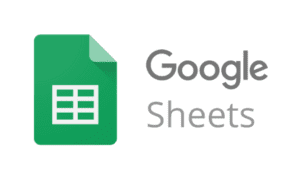Google Sheets is an amazing tool for marketers, but it can be pretty overwhelming if you’re used to working in Excel.
In this article, we’ll share five advanced tips and tricks to help you take your marketing game to the next level, regardless of whether you’re just starting out with Google Sheets or a seasoned pro.
1. Conditional Formatting Based on Another Cell
Conditional formatting is a powerful tool that can be used to highlight important data and quickly identify patterns and trends in marketing data.
Marketers can benefit from conditional formatting in a number of ways.
You can use it, for example, to highlight customers who have purchased in the last 30 days or to identify customers with high lifetime value.
When used effectively, conditional formatting can help marketers focus their attention on the most important bits of data to improve their decision-making process.
While there is no one-size-fits-all approach to using conditional formatting, there are a few general tips that marketers should keep in mind.
- Choose an appropriate color scheme that will make the data easy to read and interpret.
- Use clear and concise labels to describe each condition.
- Test the conditions before applying them to live data.
Pro tip: You can turn it up to eleven by applying conditional formatting based on another cell to unlock an unprecedented level of flexibility with this feature.
2. Split Text into Columns
The lead generation nurturing process can be pretty time-consuming and tedious, especially when it comes to outreach.
You can use Split Text into Columns to extract information from automatically generated reports exported from specialized marketing tools such as Ahrefs, Moz, or SEMrush.
Additionally, this feature makes it easier for you to leverage the power of personalization when conducting outreach, making it a valuable tool that streamlines your workflow.
3. Counting Cells with Text
Google Sheets makes it possible to quickly count the number of cells that contain certain text.
This seemingly simple feature has numerous applications, helping marketers save time in the long run by identifying duplicates and flagging outliers in data.
4. Check Email Addresses for Validity
Using ISEMAIL in Google Sheets, you can ensure that your contact lists are up-to-date and that your messages are sent to the correct recipients by checking if an email address is valid.
There are a number of benefits to using the ISEMAIL function, including the ability to:
- Save time by quickly identifying invalid email addresses
- Reduce the risk of sending emails to incorrect addresses
- Avoid undeliverable messages and bounces
- Improve the accuracy of marketing reports
Overall, ISEMAIL is a very useful tool for anyone who needs to manage and maintain large lists of email addresses, ensuring that their messages will be delivered correctly.
5. Data Validation
Checking for accuracy and completeness of data is easy and fast with data validation.
This feature can also be used to enforce rules on the data in your spreadsheets, preventing errors and ensuring accurate data entry.
Furthermore, you can create drop-down lists and input masks to control the format of data entered into your spreadsheet.
For example, if your client is a commercial painter operating in multiple locations, data validation is an easy way to manage multiple marketing campaigns at once without getting your data messy.
Closing Thoughts
This concludes our five advanced Google Sheets tips and tricks for marketing professionals.
As you will see, this powerful tool can be used to streamline your workflow and enhance your results.
If you follow these tips, you will be able to make the most of Google Sheets.


































